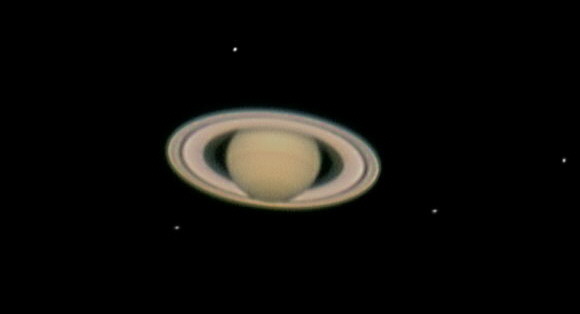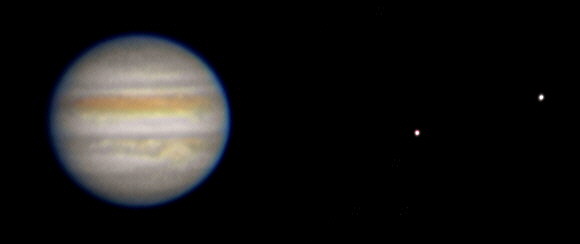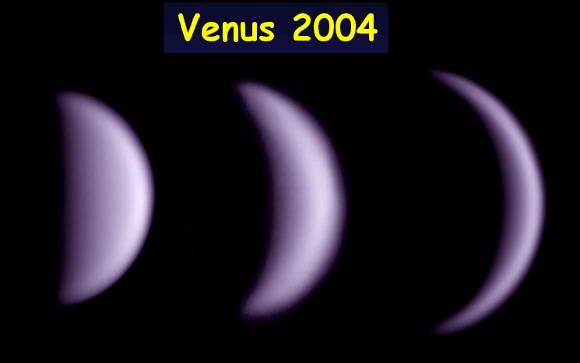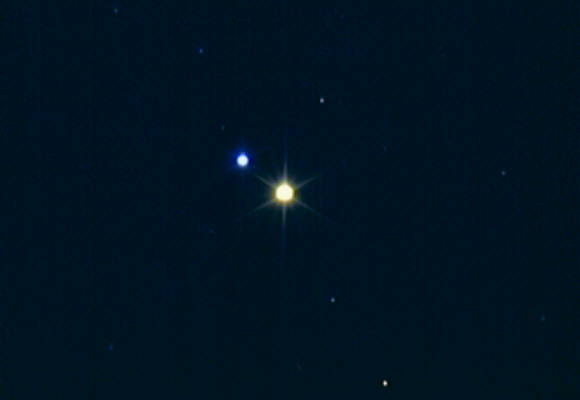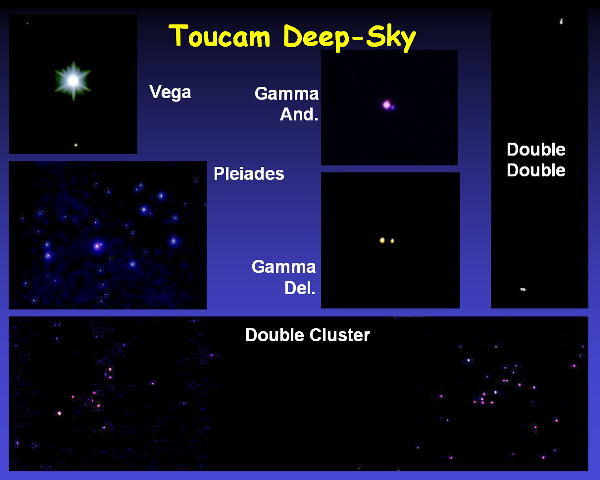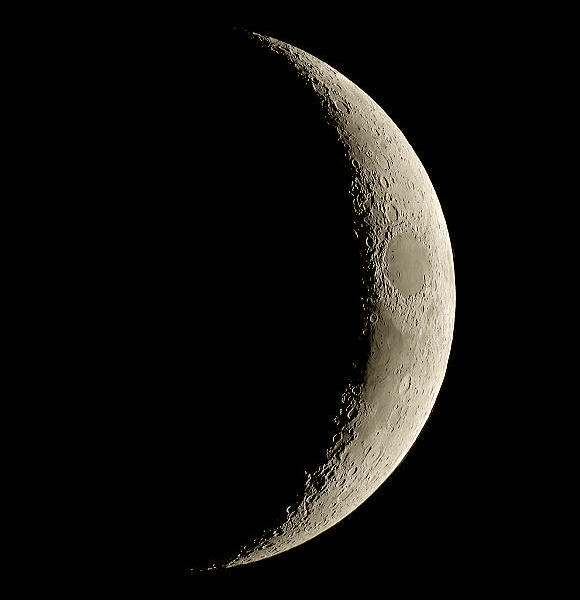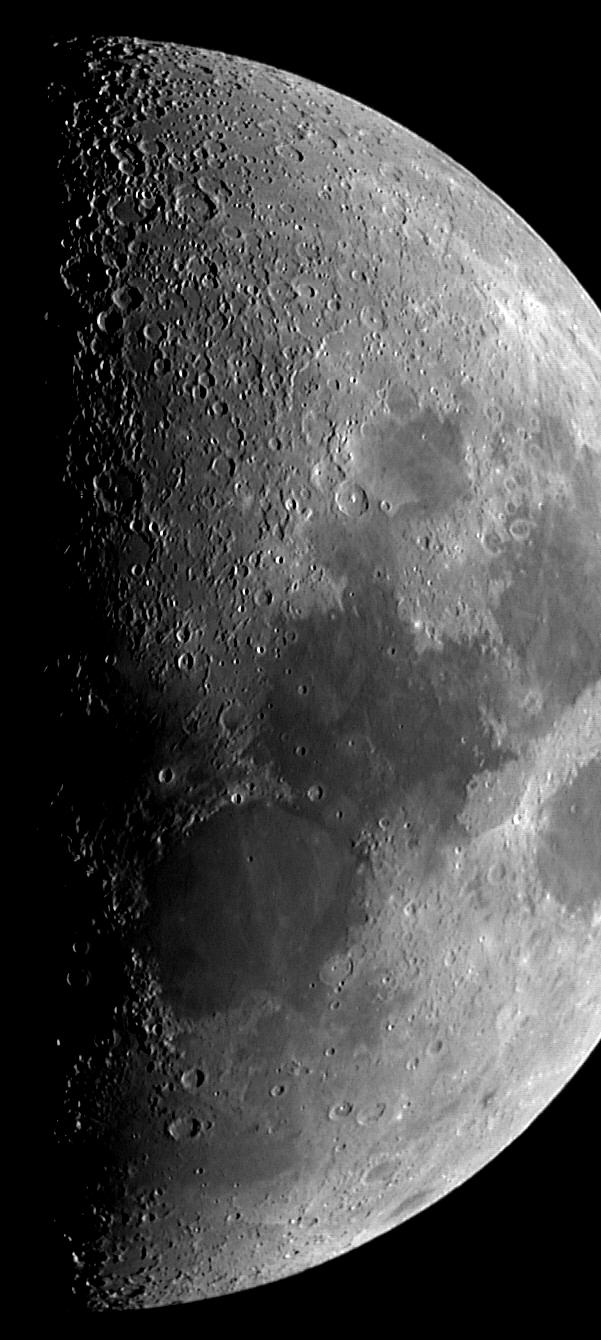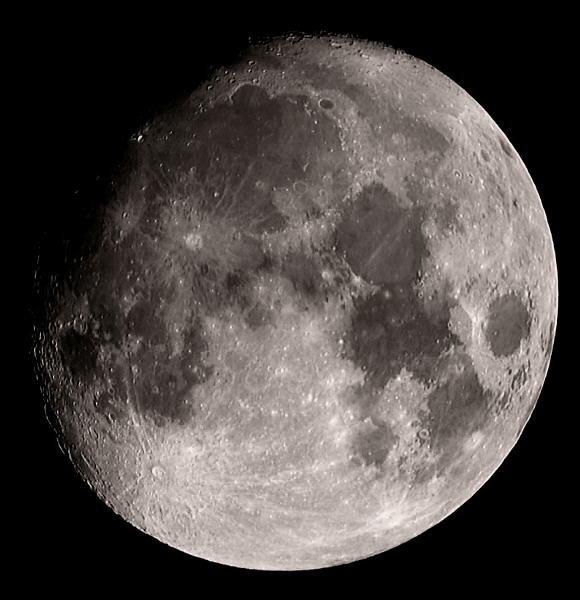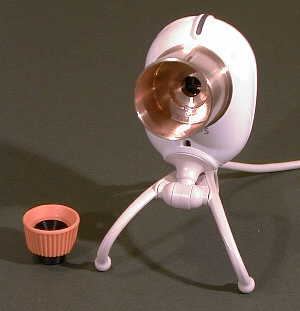
Original Toucam with 1.25inch adapter
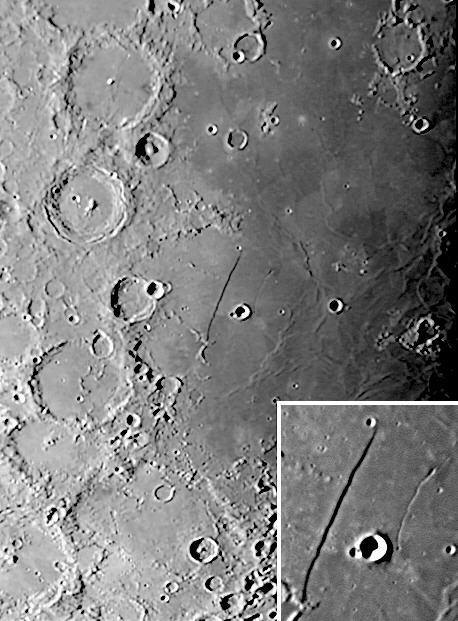
Moon - Straight Wall. Inset is using a 2x converter
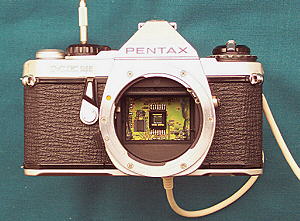
Pentax Toucam - the CCD is not quite 35mm size!!
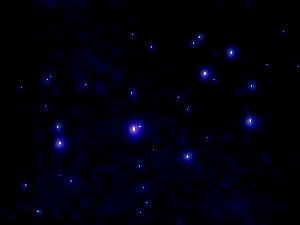
Pleiades with a 135mm lens
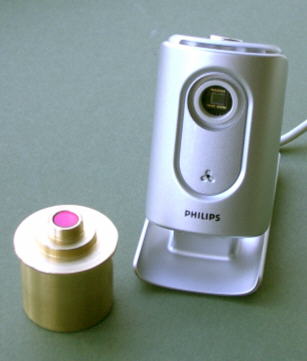
Toucam Mark II - note the infra-red filter from the lens has been re-used.
Introduction
The Toucam represents a great leap forward in quality over the Quickcam I had previously used. Yet despite this its current UK cost is only £65 for the Pro model. The even cheaper non pro versions do not have a CCD (they use a CMOS sensor) and are of lower quality so are best avoided. Note that Philips claim 1260x960 still resolution for the camera but this is interpolation as the actual CCD is 640x480 pixels. It appears to be a Sony HAD CCD chip - one of the best around! Unlike the Quickcam they do not need to be taken apart as the lens screws out. A simple 1.25 inch adapter is all that is needed to be up an running. Brian made the one shown from brass. Out of the box they are limited to a longest exposute of 1/25th second but for the Moon and planets this is fine.
Although provided with software for taking stills and video I would strongly advise using Christian Buil's IRIS software. This is freeware and is absolutely brilliant both for image taking and for image processing. It has in built support for webcams and Christian himself uses a Philips Toucam. The camera can be modified for long exposures but this requires extreme soldering dexterity! I have not attempted it but nevertheless some deep-sky objects are possible even with the 1/25th second limitation. For the Planets I'll not go back to a conventional CCD camera - the ability to shoot video and in colour makes the Philips Toucam webcam so much more enjoyable. Anyone want to buy a set of colour filters?
Pentax-Toucam
I was so impressed with the Toucam that I bought a second and mounted it in the back of an old Pentax SLR. This gives the advantage of a viewfinder and helps to get an approximate focus. This has been so successful I have built a total of 4 including 2 for friends. For details of the Pentax Toucam click here
The Pleiades was shot using the Pentax Toucam with 135mm f/2.8 lens riding piggy-back on my telescope. This time I shot a video and summed the images. The 1/25 second exposure limit prevents a detailed image but it's not bad for a £55 CCD camera.
Philips released a new ToUcam Pro II (PCVC840K) in 2003. The camera is basically the same in a smarter case, Windows XP compliant, Still limited to 1/25th second longest exposure. The circuit board looks the same, The sensor looks the same ie 640x480 CCD, USB cable is 1.5 metres long - half what it used to be, Lens adapter thread is the same, The annoying red LED is still there, The price has gone up - approx. £75 from DABS.
Philips did it again 2 years later and released the Mark 3 version. Again it was cosmetic changes only - the webcam was even still USB 1 - a missed opportunity by Philips.
